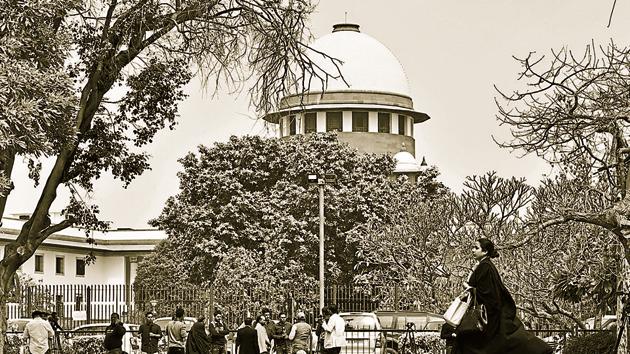The core of the Ayodhya judgment | Opinion
Work simultaneously for both parties, ensure tangible action, and answer questions on funding
Now that the Supreme Court has decided that the Ram temple will be built on the Ayodhya site, and a mosque is to come up on an alternative site of five acres in “a prominent place” in Ayodhya, the right thing to do is what S Radhakrishnan advised: dirgham pasyatu, ma hrasvam (Look far ahead, be not shortsighted).

Anything else will be a waste of time.
That looking ahead requires, however, looking at the judgment’s small print closely.
Article 142 of the Constitution is central to this. It is, in fact, the backbone of the judgment. A broad brush enabling article, it empowers the Supreme Court to pass any order necessary “for doing complete justice in any cause”. And, it is within the terms of this article that the court has ordered the creation of a Trust for the construction of the temple.
A Trust is to be formed, it has ordered, within three months of the verdict to get the temple project going. This has been clearly understood. The Supreme Court has also said that “simultaneously, with the handing over of the disputed property to the Trust”, the central government or the state government “shall hand over to the Central Sunni Waqf Board”, the land at “a suitable prominent place in Ayodhya” for the construction of the mosque.
Along with these orders, the court has passed a few vital consequential orders. The court said the following unambiguously:
One, the handing over of the disputed site to the temple trust and the handing over of an alternative site to the Sunni Waqf Board should be done simultaneously. That is to say, it has intertwined the two operations. It has made the two exercises coextensive, coeval, coterminous. It has made them a concurrent activity.
Two, on the agency for doing this, the verdict has left an option open: Central government or state government. This is broad-minded in a sense, but can be problematic in terms of the listed jurisdictions as per the Union, State and Concurrent Lists . “The Central Government and the State Government shall act in consultation with each other to effectuate the above allotment in the period stipulated.” That — effectuation within three months — is the key.
Three, that Trust is also to be empowered by government in a way that enables it to proceed with the “construction of a temple and all necessary, incidental and supplemental matters”.
Three words emerging from these three stipulations become crucial: simultaneously, effectuation, supplemental.
The first — simultaneously — is about the timing. The court has left the State with no option. It must arrange for the disputed site to be handed over to the new Trust (or body), and a new site measuring five acres to be handed over to the Waqf Board together. Not to do so would be violative of the orders.
The second — effectuation — is about tangible action on the ground. What the court has said is that intentions are not enough, what is required is tangible, palpable, hard-as-land action on the ground.
The third — supplemental — seems to point to funding. Is it saying that the State must apply itself to the question: How are the two constructions to be funded? Will the State place funds at the disposal of the Trust and the Waqf Board for the construction or will those come from public contributions? Does the Constitution of India permit State funding of places of worship?
But by far, the most important “far-sight” contained in the judgment is in what it says about the Babri Masjid’s demolition: “…the entire structure of the mosque was brought down in a calculated act of destroying a place of public worship. The Muslims have been wrongly deprived of a mosque which had been constructed well over 450 years ago.”
In this lies a great forward-looking injunction to those who have made no secret of their intention to repeat Babri Masjid-style demolitions elsewhere. The Supreme Court has made such intentions unlawful. And, in a sense, it has augmented heritage conservation norms by giving to them a theological dimension, by saying that the premeditated destruction of a house of worship is not to be countenanced.
We who are elated by the judgment must ponder, carefully, the following chastising words in it: “This Court in the exercise of its powers under Article 142 of the Constitution must ensure that a wrong committed must be remedied. Justice would not prevail if the Court were to overlook the entitlement of the Muslims who have been deprived of the structure of the mosque through means which should not have been employed in a secular nation committed to the rule of law.”
And all constitutionalists must draw heart from them.






